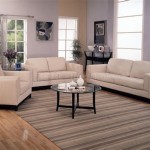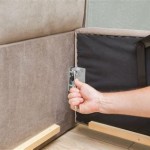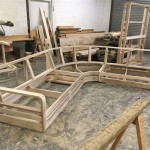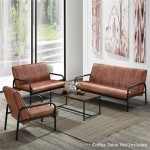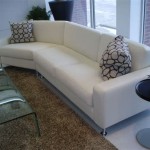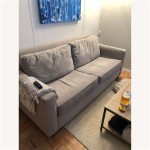The Most Comfortable Sofa Bed For Daily Use: A Comprehensive Guide
The sofa bed, once relegated to the status of an uncomfortable guest room afterthought, has undergone a significant transformation. Modern iterations prioritize both seating comfort and sleep quality, making them a viable option for daily use, particularly in smaller living spaces or multi-functional rooms. Selecting the most comfortable sofa bed for daily use requires careful consideration of several factors, including the mechanism, mattress type, frame construction, and upholstery.
A sofa bed designed for daily use needs to withstand the rigors of both sitting and sleeping night after night. Compromising on quality will quickly lead to discomfort and premature wear, ultimately defeating the purpose of choosing a multi-functional piece of furniture. This article will explore the key aspects that contribute to a comfortable and durable sofa bed suitable for daily use.
Understanding Sofa Bed Mechanisms
The mechanism of a sofa bed directly impacts its ease of use and overall comfort. Common sofa bed mechanisms include pull-out, click-clack, and trundle designs. Each offers distinct advantages and disadvantages. Pull-out mechanisms typically involve a hidden mattress that unfolds from within the sofa frame. Click-clack designs convert from a sofa to a bed by reclining the backrest until it lies flat. Trundle beds feature a hidden bed frame that rolls out from under the sofa.
For daily use, a pull-out mechanism with a supportive mattress is generally preferred. These mechanisms often feature a more robust frame and allow for a thicker, more comfortable mattress. However, the quality of the mechanism itself is crucial. A smooth, easy-to-operate mechanism that locks securely in both sofa and bed positions is essential. Look for mechanisms with reinforced hinges and durable metal frames to ensure longevity and prevent sagging or instability.
Click-clack sofa beds may be suitable for occasional use, but their comfort level for daily sleeping is often limited. The sleeping surface is typically firmer and less contoured than a dedicated mattress. Trundle beds, while convenient, often compromise on mattress thickness and support due to space constraints.
Before purchasing any sofa bed, it is imperative to test the mechanism thoroughly. Ensure it operates smoothly, locks securely, and feels stable when both sitting and lying down. Consider the space required to fully extend the bed and ensure it fits comfortably within the intended room.
Mattress Type and Support
The mattress is arguably the most critical factor in determining the comfort of a sofa bed for daily use. Traditional sofa bed mattresses were often thin and flimsy, leading to discomfort and inadequate support. Modern sofa beds offer a wider range of mattress options, including innerspring, memory foam, and hybrid designs.
Innerspring mattresses are a traditional option, featuring coils that provide support and bounce. However, lower-quality innerspring mattresses can be prone to sagging and may not offer sufficient pressure relief. Look for innerspring mattresses with a higher coil count and individually wrapped coils, which provide better support and reduce motion transfer.
Memory foam mattresses conform to the body, providing excellent pressure relief and support. They are particularly well-suited for individuals who experience back pain or joint discomfort. Memory foam can also help to reduce motion transfer, making it a good choice for couples. However, some individuals find memory foam to be too warm, as it can trap heat. Gel-infused memory foam can help to mitigate this issue.
Hybrid mattresses combine the benefits of innerspring and memory foam. They typically feature a layer of pocketed coils for support and a layer of memory foam for comfort and pressure relief. Hybrid mattresses offer a good balance of support, comfort, and temperature regulation.
The thickness of the mattress is also an important consideration. A thicker mattress generally provides more support and comfort. For daily use, a mattress thickness of at least 5 inches is recommended. Consider the density of the foam as well. Higher density foam tends to be more durable and supportive.
Beyond the core mattress material, consider the cover. A breathable and durable cover will enhance comfort and prolong the lifespan of the mattress. Look for covers that are removable and washable for easy maintenance.
Frame Construction and Durability
The frame of a sofa bed provides the foundation for both seating and sleeping comfort. A robust and well-constructed frame is essential for ensuring the longevity and stability of the sofa bed. The choice of materials and construction techniques significantly impacts the durability and overall performance of the piece.
Hardwood frames, such as those made from kiln-dried hardwoods like oak or maple, are the most durable and resistant to warping or cracking. These frames offer superior support and can withstand the stresses of daily use. Engineered wood frames, such as plywood or particleboard, are a more affordable option, but they are generally less durable than hardwood frames. When selecting a sofa bed with an engineered wood frame, ensure that the wood is of high quality and properly reinforced.
The joints of the frame should be securely fastened using screws, dowels, and glue. Avoid frames that are held together with staples alone, as these are more likely to weaken over time. Look for frames with corner blocks, which provide additional support and stability.
The suspension system, which supports the cushions and mattress, also plays a crucial role in comfort and durability. Sinuous springs, also known as no-sag springs, are a common choice for sofa beds. These springs are pre-tensioned to provide firm support and prevent sagging. Hand-tied coil springs are a more traditional option that offers excellent support and comfort, but they are also more expensive.
The weight capacity of the sofa bed is an important consideration, particularly if it will be used by multiple individuals. Check the manufacturer's specifications to ensure that the sofa bed is capable of supporting the intended weight. A well-constructed frame and suspension system will distribute weight evenly and prevent sagging or damage.
Upholstery Material and Aesthetics
The upholstery material of a sofa bed significantly contributes to its aesthetic appeal and overall comfort. The choice of upholstery material should be based on personal preference, lifestyle, and budget. Common upholstery materials include fabric, leather, and synthetic alternatives.
Fabric upholstery offers a wide range of colors, patterns, and textures. Natural fabrics, such as cotton and linen, are breathable and comfortable, but they can be prone to staining and fading. Synthetic fabrics, such as polyester and microfiber, are more durable and stain-resistant. Blended fabrics, which combine natural and synthetic fibers, offer a good balance of comfort and durability. Consider the weave of the fabric. A tighter weave will be more durable and resistant to wear and tear.
Leather upholstery is a luxurious and durable option that can add a touch of sophistication to any room. Leather is naturally resistant to stains and spills, and it develops a rich patina over time. However, leather can be expensive and requires regular maintenance to prevent cracking and drying. There are different types of leather, including top-grain, full-grain, and bonded leather. Top-grain leather is the highest quality and most durable option.
Synthetic leather, also known as faux leather or vegan leather, is a more affordable alternative to genuine leather. Synthetic leather is typically made from polyurethane or polyvinyl chloride and offers good durability and stain resistance. However, synthetic leather may not be as breathable or comfortable as genuine leather.
The color and style of the upholstery should complement the existing décor of the room. Consider the overall aesthetic and choose a color that is both visually appealing and practical. Darker colors tend to hide stains and wear better than lighter colors.
Beyond the main upholstery fabric, consider the details such as the stitching, tufting, and trim. These details can add character and visual interest to the sofa bed. Ensure that the stitching is neat and secure and that the tufting is evenly spaced and well-maintained.
Finally, consider the ease of cleaning and maintenance. For daily use, choose an upholstery material that is easy to clean and resistant to stains and spills. Removable and washable covers are a convenient option for keeping the sofa bed looking its best.

Most Comfortable Quality Everyday Sofa Beds Bedding Storage Sofafox
.jpg?strip=all)
Is It Okay To Sleep On A Sofa Bed Every Night Pros And Cons

The 11 Best Sofa Beds In 2024 For Style And Comfort To Make Most Of Your Space

12 Best Sleeper Sofas Of 2024 Time Stamped

15 Best Sleeper Sofas Sofa Beds And Pullout Couches Of 2024 Cnn Underscored

24 Best Sofa Beds 2024 Editor S Pick British Gq

9 Best Sleeper Sofas 2024 Tested And Reviewed By Our Editors Architectural Digest

Best Sofa Beds 2024 Tried And Tested The Independent

20 Best Comfortable Sofa Beds For All Budgets 2024

16 Best Couches For 2024 Ap Buyline Ping

